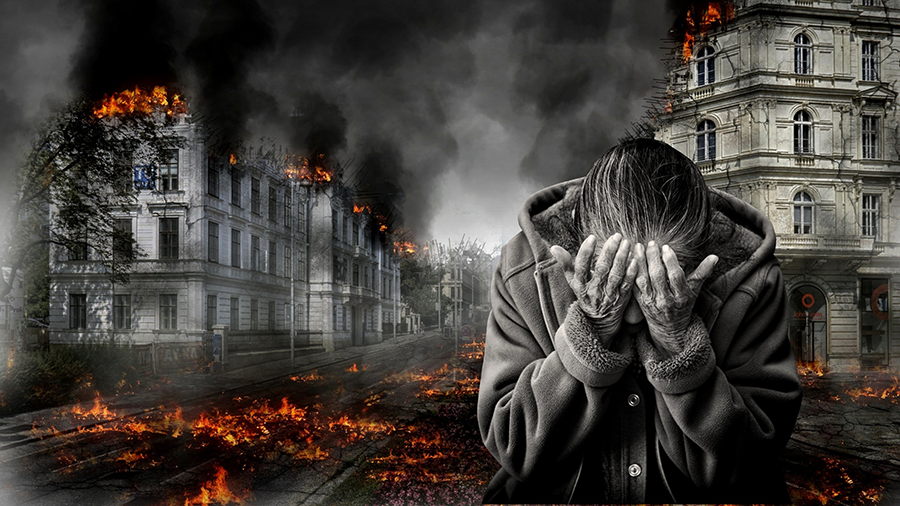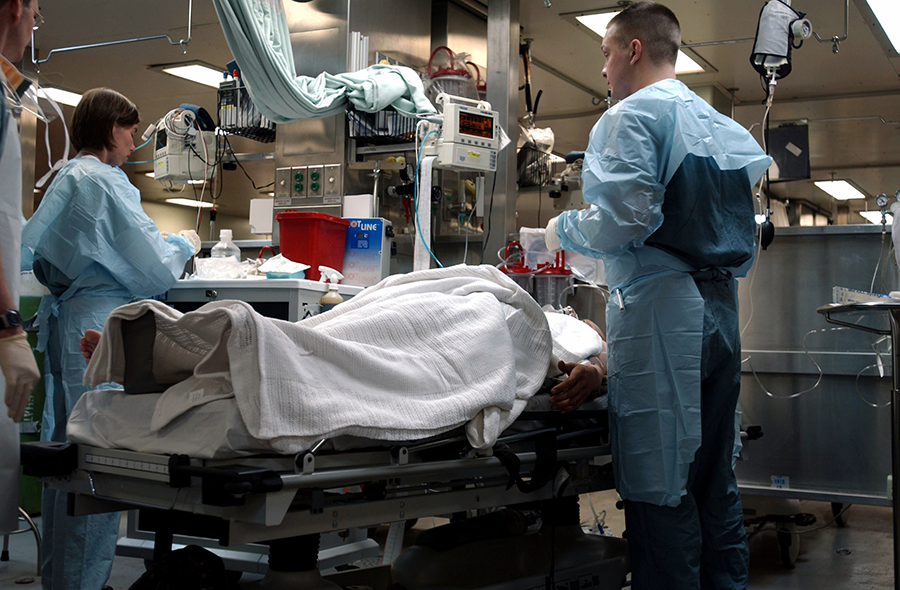
Trauma Is in the Nervous System—Not in the Event!
Peter A. Levine
Trauma Defined
Trauma happens when we are overwhelmed by an experience or event. When we cannot cope and any mechanisms for doing so that we may have developed fail and we feel helpless and hopeless. Our individual susceptibility to trauma differs with each of us depending on a variety of factors, especially age and trauma history. The fact is that the younger we are when we experience trauma the more likely we are to be overwhelmed by common occurrences that might not affect an older child or adult. In the past it was believed that traumatic symptoms are the result of and equivalent to the type and terrible nature of the external event. While the level and duration of the stressor is an important factor, it does not define trauma. That is because “trauma is not in the event itself; rather, trauma resides in the nervous system.
The longer we live, the more inevitable it is that we will experience trauma.
Trauma is the response to a deeply distressing or disturbing event that overwhelms an individual’s ability to cope, causes feelings of helplessness, diminishes their sense of self and their ability to feel the full range of emotions and experiences.
It does not discriminate and it is pervasive throughout the world. A World Mental Health survey conducted by the World Health Organization found that at least a third of the more than 125,000 people surveyed in 26 different countries had experienced trauma. That number rose to 70% when the group was limited to people experiencing core disorders as defined by the DSM-IV (the classification found in the Diagnostic and Statistical Manual of Mental Disorders, 4th Edition). But those numbers are just for instances that have been reported; the actual number is probably much, much higher.

While there are no objective criteria to evaluate which events will cause post-trauma symptoms, circumstances typically involve the loss of control, betrayal, abuse of power, helplessness, pain, confusion and/or loss. The event need not rise to the level of war, natural disaster, nor personal assault to affect a person profoundly and alter their experiences. Traumatic situations that cause post-trauma symptoms vary quite dramatically from person to person. Indeed, it is very subjective and it is important to bear in mind that it is defined more by its response than its trigger.

Common Responses and Symptoms of Trauma
Response to a traumatic event varies significantly among people, but there are some basic, common symptoms.
Emotional signs include:
- Anxiety
- Fear
- Guilt
- Grief
- Shame
- Depression
- Sadness
- Feeling lost
- Feeling abandoned
- Feeling isolated
- Worry about others
- Anger
- Irritability
- Helplessness
- Feeling numb, startled, shocked

Common physical symptoms:
- Nightmares
- Insomnia
- Difficulty with relationships
- Emotional outbursts
- Nausea (feeling sick)
- Upset stomach
- Tremors (lips, hands)
- Feeling uncoordinated
- Profuse sweating
- Diarrhea
- Dizziness
- Chest pain (should be checked at hospital)
- Rapid heart beat
- Headaches
- Sleep disturbances
- Chills
- Altered sleep patterns
- Changes in appetite
- Gastrointestinal problems

Cognitive Issues:
- Slow thinking
- Difficulty making decisions
- Difficulty with problem solving
- Confusion
- Disorientation (especially to time and place)
- Difficulty calculating
- Difficulty concentrating
- Difficulty with remembering
- Difficulty naming common objects
- Seeing the event over and over
- Hyper-vigilance
Psychological disorders may include:
- PTSD
- Depression
- Anxiety
- Dissociative disorders
- Substance abuse problems
Acute Stress Disorder vs. Post-Traumatic Stress Disorder
Not every traumatized person develops post-traumatic stress disorder (PTSD). Some people develop some symptoms like those listed above, but they go away after a few weeks. This is called acute stress disorder (ASD).
When the symptoms last more than a month and seriously affect the person’s ability to function, the person may be suffering from PTSD. Some people with PTSD don’t show symptoms for months after the event itself. And some people deal with PTSD symptoms of a traumatic experience for the rest of their life. Symptoms of PTSD can escalate to panic attacks, depression, suicidal thoughts and feelings, drug abuse, feelings of being isolated and not being able to complete daily tasks.

Types of Trauma
As mentioned above, trauma is defined by the experience of the survivor. But there is a delineation of trauma levels. Broadly described, they can be classified as large ‘T’ traumas and small ‘t’ traumas.
Small ‘t’ traumas are circumstances where one’s bodily safety or life is not threatened, but cause symptoms of trauma nonetheless. These events set one off-kilter and disrupt normal functioning in the world. They certainly don’t seem small at all when they occur, but most will have an easier time recovering from them than a large ‘T’ trauma. On the other hand, small ‘t’ traumas are sometimes disregarded since they seem surmountable. This can be perilous as the cumulative effect of an unprocessed trauma or traumas may trail a person relentlessly. Examples are: life changes like a new job or moving; relationship events like divorce, infidelity, or an upsetting personal conflict; life stressors like financial troubles, work stress or conflict, or legal battles.

Large ‘T’ traumas are extraordinary experiences that bring about severe distress and helplessness. They may be one-time events like acts of terrorism, natural catastrophes, and sexual assault. Or, they may be prolonged stressors like war, child abuse, neglect or violence. They are much more difficult or even impossible to overlook, yet they are often actively avoided. For instance, people may steer clear of triggers like personal reminders, certain locations, or situations like crowded or even deserted places. And they may resist confronting the memory of the event. As a coping mechanism, this only works for so long. Prolonging access to support and treatment prolongs healing.

Therapy for Trauma
There is no cure for trauma nor any quick fixes for the suffering associated with them. But there is hope. Trauma survivors are best served by working with a therapist or therapy that is trauma-focused or trauma-informed. Most trauma-informed therapists will employ a combination of therapy modalities.
Neurosomatic Psychology uses the body to process trauma by releasing the stress response of somaticized perception helping many trauma suffers to process the reactions to the original events. Neurosomatic Psychology employs a body desensitizing reeducation processes combined with client centered dialogue.

We invite you to experience the stress and trauma relief that can be had using the Neurosomatic Psychology System for yourself, family, friends, and clients.

Recent Comments